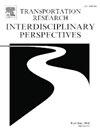Underreporting and selection bias of serious road traffic injuries in auto insurance claims and police reports in British Columbia, Canada
IF 3.9
Q2 TRANSPORTATION
Transportation Research Interdisciplinary Perspectives
Pub Date : 2025-03-01
DOI:10.1016/j.trip.2025.101375
引用次数: 0
Abstract
Background
Administrative datasets (police reports, insurance claims, medical records), form the basis for road safety research, but suffer from under-reporting and selection bias. Data linkage can provide a fuller picture of road traffic injuries and provide insight into dataset-specific biases. We examined the overlap of serious road traffic injuries involving motor vehicles reported in hospitalization records, police reports, and insurance claims in British Columbia, Canada (2015 – 2019) and assess selection bias within each injury dataset.
Methods
We probabilistically linked police reports, insurance claims, and hospital admissions to a provincial population directory, identifying distinct persons and injuries across datasets. Injuries were linked to sociodemographic and geographic details from other government data including age, sex, low-income status, neighbourhood income and health authority. We analyzed serious injuries to drivers, cyclists and pedestrians. We assessed the proportion of injuries captured by a database (ascertainment rate) and assessed selection bias based on which sociodemographic groups were more likely to only be captured in hospital admissions.
Results
From 2015 to 2019, we estimated 57,097 motor vehicle-involved injuries (48,198 motor vehicle drivers, 2,641 cyclists, 6,258 pedestrians). Insurance claims had the highest ascertainment rate for drivers (95.7%), but lower for cyclists (83.3%) and pedestrians (76.5%). Police records and hospital admissions better captured cyclist and pedestrian injuries compared to driver injuries. Unlinked hospital admission injuries were more likely from low-income and remote populations.
Conclusions
The underreporting highlights the need for improved injury data collection especially for pedestrian and cyclists, to better capture the full injury burden, particularly among marginalized sociodemographic groups.
加拿大不列颠哥伦比亚省汽车保险索赔和警察报告中严重道路交通伤害的漏报和选择偏差
背景:行政数据集(警察报告、保险索赔、医疗记录)是道路安全研究的基础,但存在报告不足和选择偏差。数据链接可以提供更全面的道路交通伤害情况,并提供对数据集特定偏差的见解。我们检查了加拿大不列颠哥伦比亚省(2015 - 2019)住院记录、警察报告和保险索赔中涉及机动车的严重道路交通伤害的重叠情况,并评估了每个伤害数据集中的选择偏差。方法:我们将警方报告、保险索赔和医院入院与省级人口目录进行概率关联,识别不同数据集的不同人员和伤害。伤害与来自其他政府数据的社会人口和地理细节有关,包括年龄、性别、低收入状况、邻里收入和卫生当局。我们分析了司机、骑自行车的人和行人的严重受伤情况。我们评估了数据库捕获的伤害比例(确定率),并评估了基于哪些社会人口统计学群体更有可能只在住院时被捕获的选择偏差。从2015年到2019年,我们估计了57,097起机动车相关伤害(48,198名机动车驾驶员,2,641名骑自行车的人,6,258名行人)。保险理赔查明率最高的是司机(95.7%),其次是骑自行车者(83.3%)和行人(76.5%)。警方的记录和医院的入院记录更好地记录了骑车人和行人的伤害,而不是司机的伤害。不相关的住院伤害更可能来自低收入和偏远地区的人群。低报突出表明需要改进伤害数据收集,特别是对行人和骑自行车的人,以更好地捕捉全部伤害负担,特别是在边缘化的社会人口群体中。
本文章由计算机程序翻译,如有差异,请以英文原文为准。
求助全文
约1分钟内获得全文
求助全文
来源期刊

Transportation Research Interdisciplinary Perspectives
Engineering-Automotive Engineering
CiteScore
12.90
自引率
0.00%
发文量
185
审稿时长
22 weeks
 求助内容:
求助内容: 应助结果提醒方式:
应助结果提醒方式:


